Abstract Sex. We Don’t Have Any Clothes, Only Equipment
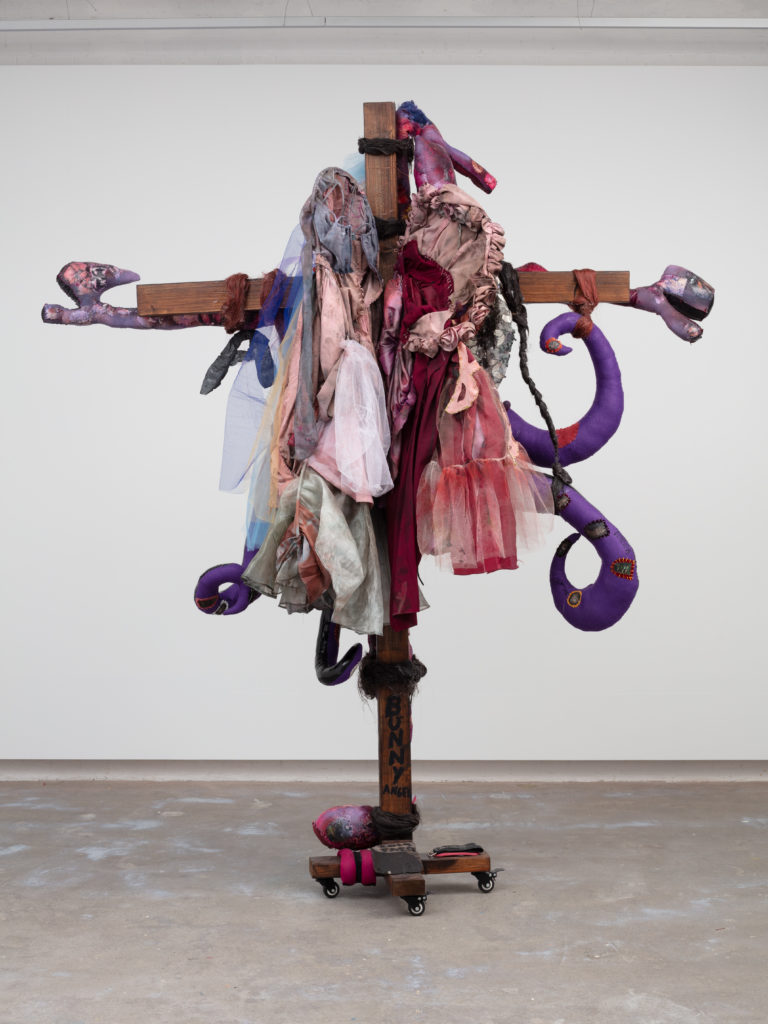 During Artissima 2019, the collateral project ‘Abstract Sex. We don’t have any clothes, only equipment’ was unveiled. Conceived by Artissima director Ilaria Bonacossa, and curated by independent curator and writer Lucrezia Calabrò Visconti and gallery owner and critic Guido Costa, the project took place in a cult space in town, Jana – fashion boutique and historical landmark for artists, writers and intellectuals. To introduce this fascinating project supported by Kristina Ti, Simone Rossi engaged in a dialogue with Ilaria Bonacossa, creating a roundtable for a horizontal conversation between curators. The result is a lively debate where Calabrò Visconti and Costa, for the occasion, provide answers in unison, reflecting a significant unity of purpose.
During Artissima 2019, the collateral project ‘Abstract Sex. We don’t have any clothes, only equipment’ was unveiled. Conceived by Artissima director Ilaria Bonacossa, and curated by independent curator and writer Lucrezia Calabrò Visconti and gallery owner and critic Guido Costa, the project took place in a cult space in town, Jana – fashion boutique and historical landmark for artists, writers and intellectuals. To introduce this fascinating project supported by Kristina Ti, Simone Rossi engaged in a dialogue with Ilaria Bonacossa, creating a roundtable for a horizontal conversation between curators. The result is a lively debate where Calabrò Visconti and Costa, for the occasion, provide answers in unison, reflecting a significant unity of purpose.
Bonacossa & Rossi: ‘Abstract Sex: We don’t have any clothes, only equipment’ brings the fair to the heart of Turin. After considering a number of locations, the exhibition has been set up in a shop. In your opinion, how can Jana be turned into an exhibition venue, capable of reflecting on the contemporary forms of desire? And, in this perspective, does the peculiar history of Jana seem important to you?
Calabrò Visconti & Costa: The idea of building the show inside a shop was a stimulus to think about the ambivalent role that neoliberalist structures have had in the construction of the concept of desire over the last 50 years. While the radical experiences of the 1970s invoked emancipating and revolutionary strategies of desire as a possibility of escape from capitalist apparatus of control, the so-called “libidinal society” of the present has completely absorbed terms like pleasure, sex and love inside neoliberal dynamics. Fashion, in particular, has played a mutable role in this process: just consider, for example, the anecdote in which Mario Mieli, a well-known activist and writer, and seminal figure for gender studies in Italy, takes part in the demonstrations of the extra-parliamentary left in the 1970s by praising Chanel and Dior rather than Marx and Lenin. Today, Mieli’s cry “El pueblo unido è meglio travestido” runs up against the awareness that fashion, like all consumer objects on a micro or macro level, is part of what Preciado has defined as the “pharmacopornographic” regime. We were interested in seeing if and how it is still possible to attempt emancipatory proposals in this historical-political context, and many of the works in the show come to grips with the fact of being inside a boutique, following an underlying thematic trail that surfaces repeatedly in the exhibition. As the subtitle of the project borrowed from the film Deserto (2018) by Jacopo Miliani says, “we don’t have any clothes, only equipment.”
L’idea di costruire la mostra all’interno di un negozio è stato uno stimolo a riflettere sul ruolo ambivalente che le strutture del neoliberismo hanno avuto nella costruzione del concetto di desiderio negli ultimi cinquant’anni. Infatti, se le esperienze radicali degli anni Settanta invocavano le strategie emancipatorie e rivoluzionarie del desiderio come vere e proprie possibilità di fuga dagli apparati capitalistici, la cosiddetta “società libidinale” contemporanea ha integrato completamente termini come piacere, sesso e amore all’interno delle dinamiche neoliberiste. La moda, nello specifico, ha avuto un ruolo mutevole in questo processo: pensiamo ad esempio all’aneddoto che vede Mario Mieli, il noto attivista e scrittore, figura seminale per la teoria degli studi di genere in Italia, partecipare alle manifestazioni della sinistra extraparlamentare negli anni Settanta inneggiando a Chanel e Dior invece che a Marx e Lenin. Oggi, il grido di Mieli “El pueblo unido è meglio travestido” si scontra con la consapevolezza che la moda, come tutti gli oggetti di consumo a livello micro e macroscopico, rientra in quello che Preciado ha definito “regime farmacopornografico”. Ci interessava capire se e come sia ancora possibile azzardare delle proposte emancipatorie in questo contesto storico-politico; molti lavori in mostra si confrontano con il fatto di essere in una boutique, seguendo una corrente tematica sotterranea che emerge a più riprese nel percorso espositivo. Come dice il sottotitolo del progetto, mutuato dal film Deserto di Jacopo Miliani (2018), “non abbiamo vestiti, ma solo equipaggiamenti”.
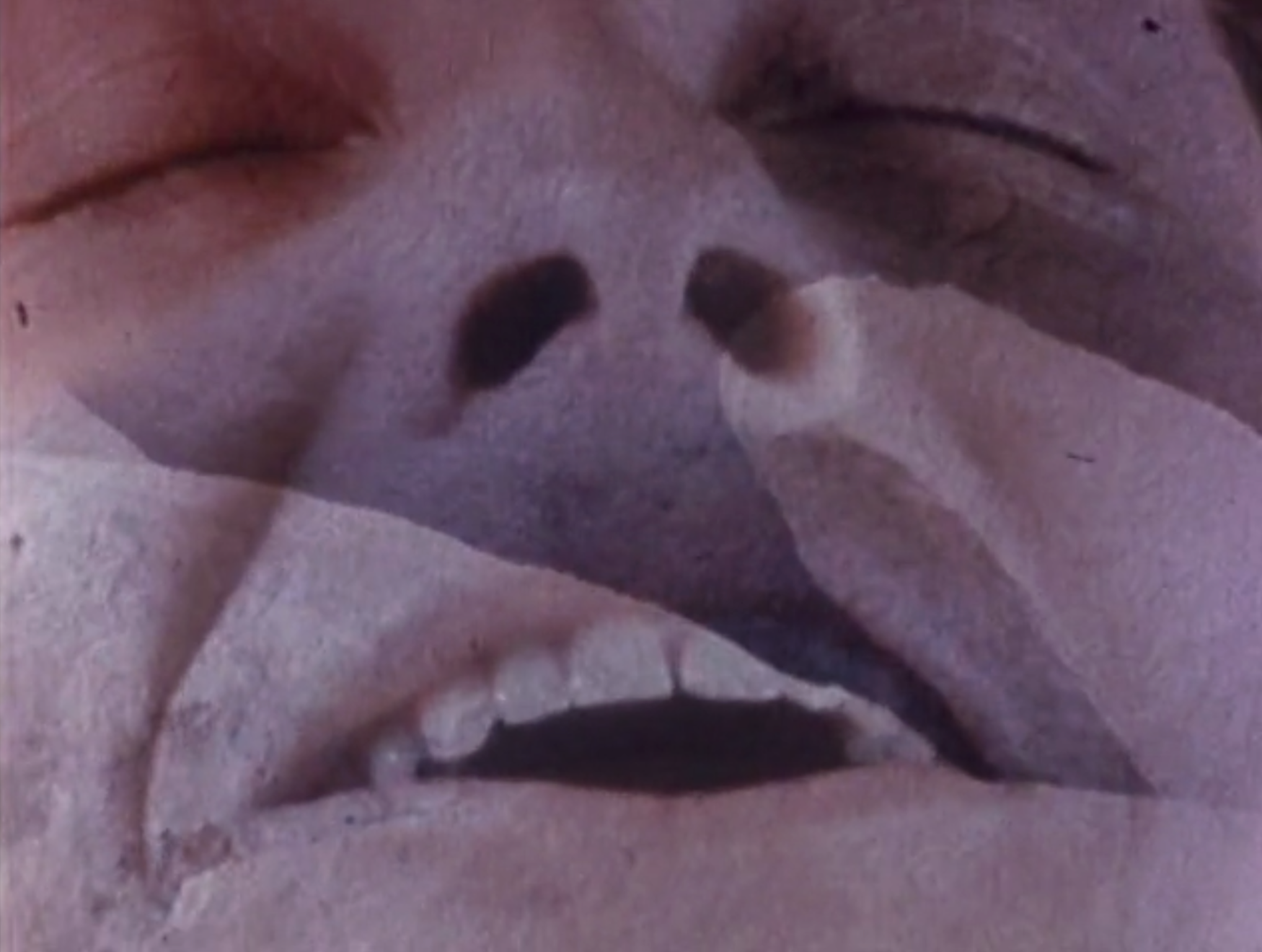 B&R: The exhibition displays a selection of photographies, videos, sculptures, works on canvas or paper, unexpected tools and hybrid devices, lent to us by art galleries participating in the fair. On one hand, this provides galleries with a new and exciting chance to meet public and clients, but it also narrows your scope. How did you deal with such a constraint on your research?
B&R: The exhibition displays a selection of photographies, videos, sculptures, works on canvas or paper, unexpected tools and hybrid devices, lent to us by art galleries participating in the fair. On one hand, this provides galleries with a new and exciting chance to meet public and clients, but it also narrows your scope. How did you deal with such a constraint on your research?
VC&C: At first, we were sceptical; it seemed like too much of a limitation for the ambitions of the project we had in mind. Then, when the research phase began, we understood the quantity and quality of the artists involved by the galleries showing at the fair, and we decided to accept the challenge. In recent months we have examined the practices of every single artist, represented by every single gallery included in Artissima this year, and this has allowed us to build a project completely situated in the context that was proposed to us, but also to develop a special viewpoint on the organism of the fair, through capillary knowledge of the various artistic practices that give life to it. The occasion of the fair brings together, for a few days in the same place, extremely varied lines of thought and theoretical discourses, which interact for the rest of the year from heterogeneous institutional contexts and separated national scenes. The use of the fair platform to bring out and showcase these dialogues through an openly curatorial gaze has always been one of the strengths of Artissima.
All’inizio eravamo scettici, ci sembrava un limite troppo grande rispetto alle ambizioni del progetto che avevamo in mente. Poi, una volta iniziata la fase di ricerca, ci siamo resi conto della quantità e qualità degli artisti coinvolti dalle gallerie presenti in fiera e abbiamo deciso di accettare la sfida. Negli ultimi mesi abbiamo guardato alla pratica di ogni singolo artista rappresentato da ogni singola galleria inclusa ad Artissima quest’anno. Ciò ci ha permesso di costruire un progetto completamente situato nel contesto che ci è stato proposto, ma anche di sviluppare una visione privilegiata sull’organismo della fiera attraverso la conoscenza capillare delle diverse pratiche artistiche che la animano. L’occasione della fiera raccoglie per pochi giorni nello stesso luogo ricerche artistiche, linee di pensiero e discorsi teorici estremamente articolati, che si parlano per il resto dell’anno da contesti istituzionali eterogenei e scene nazionali lontane tra loro. L’uso della piattaforma fieristica per far emergere e valorizzare questi dialoghi attraverso uno sguardo dichiaratamente curatoriale è sempre stato una delle forze di Artissima.
B&R: ‘Abstract Sex’ is halfway between a pirate action and an exhibition. Are there any other artistic projects in different contexts that you have in mind and that have somehow provided inspiration to build such a rhizomatic curatorial framework?
VC&C: Over the years, we both have had curatorial experiences in unconventional settings. By now it is a widely practiced method, to the point of influencing not only the display of the works, but even their creative process. Paradoxically, it is harder to come to terms with aseptic and regulated spaces of a gallery or a museum, and above all it is much less fun. In this case, the challenge was to come to terms with spaces of high symbolic value, with their precise history, connected in a certain way to several subtexts of the exhibition, such as seduction or the body. It has been like organising a sort of catwalk, like a fashion show of concepts and ideas, concentrated in the very short time span of four days open to the public. This is why we have imagined the event as a sort of raid, a theoretical illumination, almost an exemplary anecdote.
Entrambi, nel corso degli anni, abbiamo avuto esperienze curatoriali in luoghi non convenzionali. È una modalità ormai ampiamente praticata, al punto da influenzare non soltanto il display delle opere, ma addirittura il loro processo creativo. Paradossalmente è più difficile confrontarsi con gli spazi asettici e normati di una galleria o di un museo, e soprattutto molto meno divertente. In questo caso si è trattato anche di confrontarsi con spazi dal forte valore simbolico, con una loro storia precisa, connessa in un certo modo ad alcuni sottotesti della mostra, come la seduzione o il corpo. È stato come organizzare una sorta di passerella, o sfilata di concetti e di idee, concentrata nel tempo brevissimo dell’apertura al pubblico, quattro giorni. Per questo l’abbiamo immaginata come una specie di incursione, una illuminazione teoretica, quasi un aneddoto esemplare.
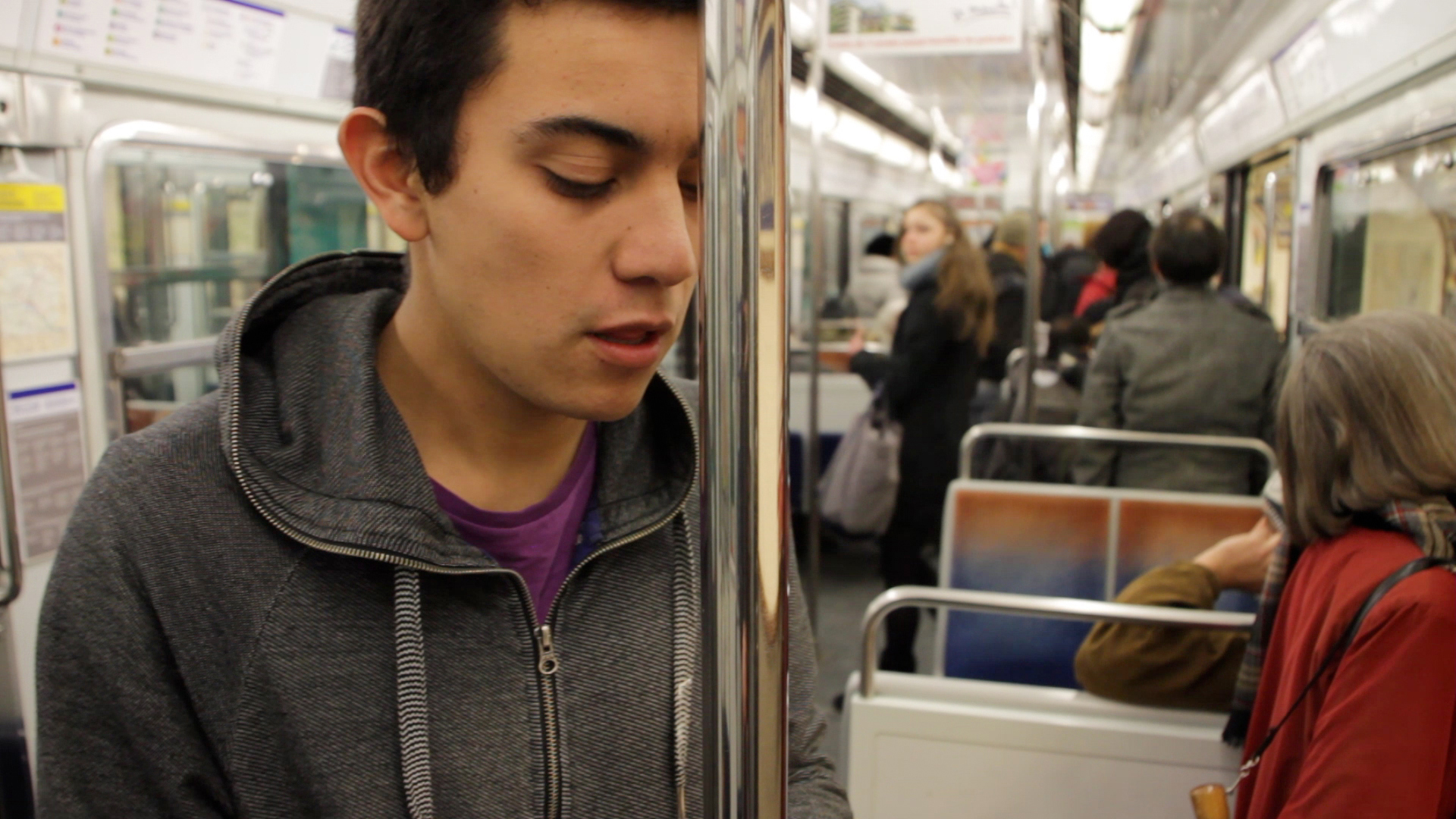
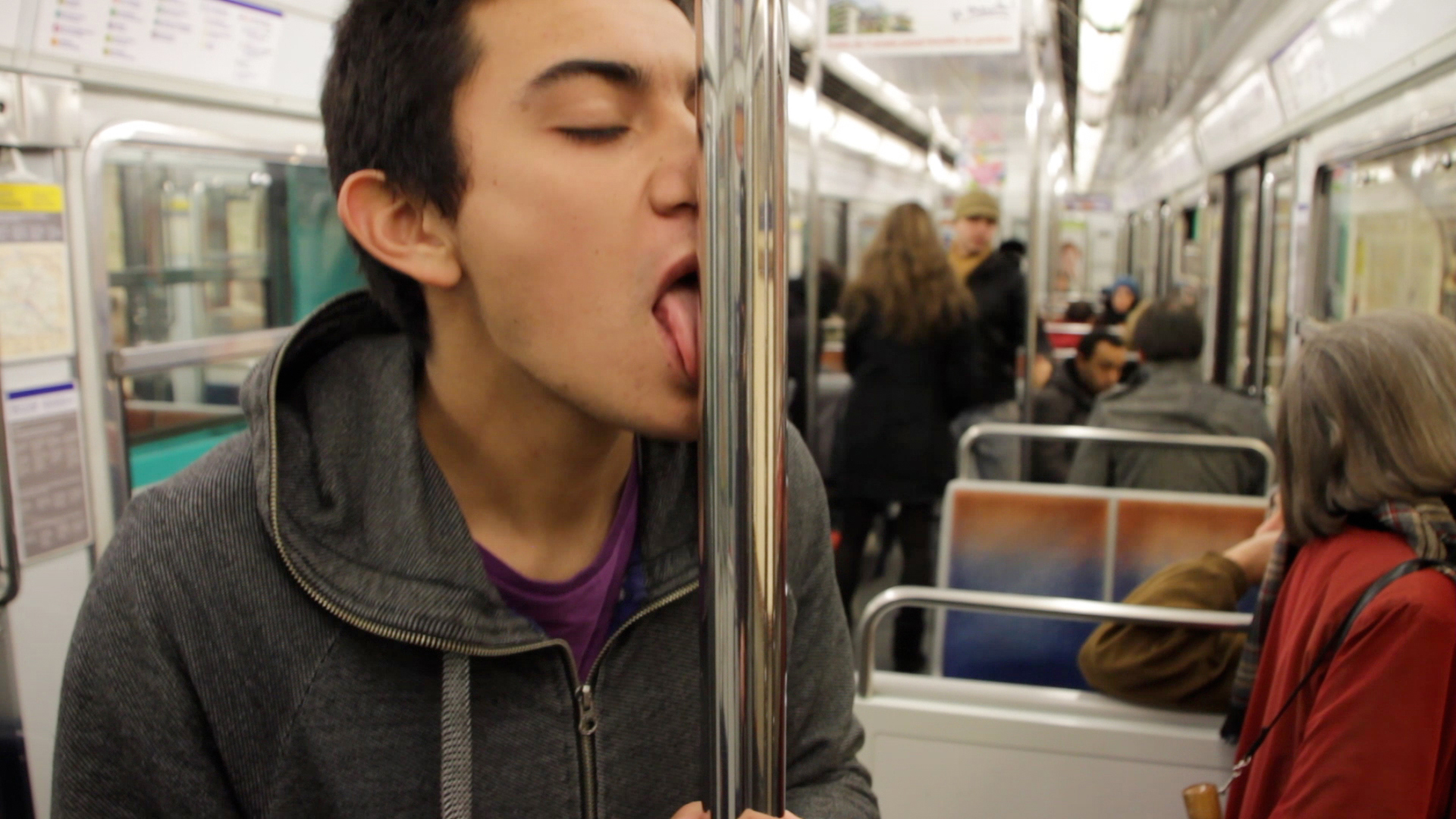
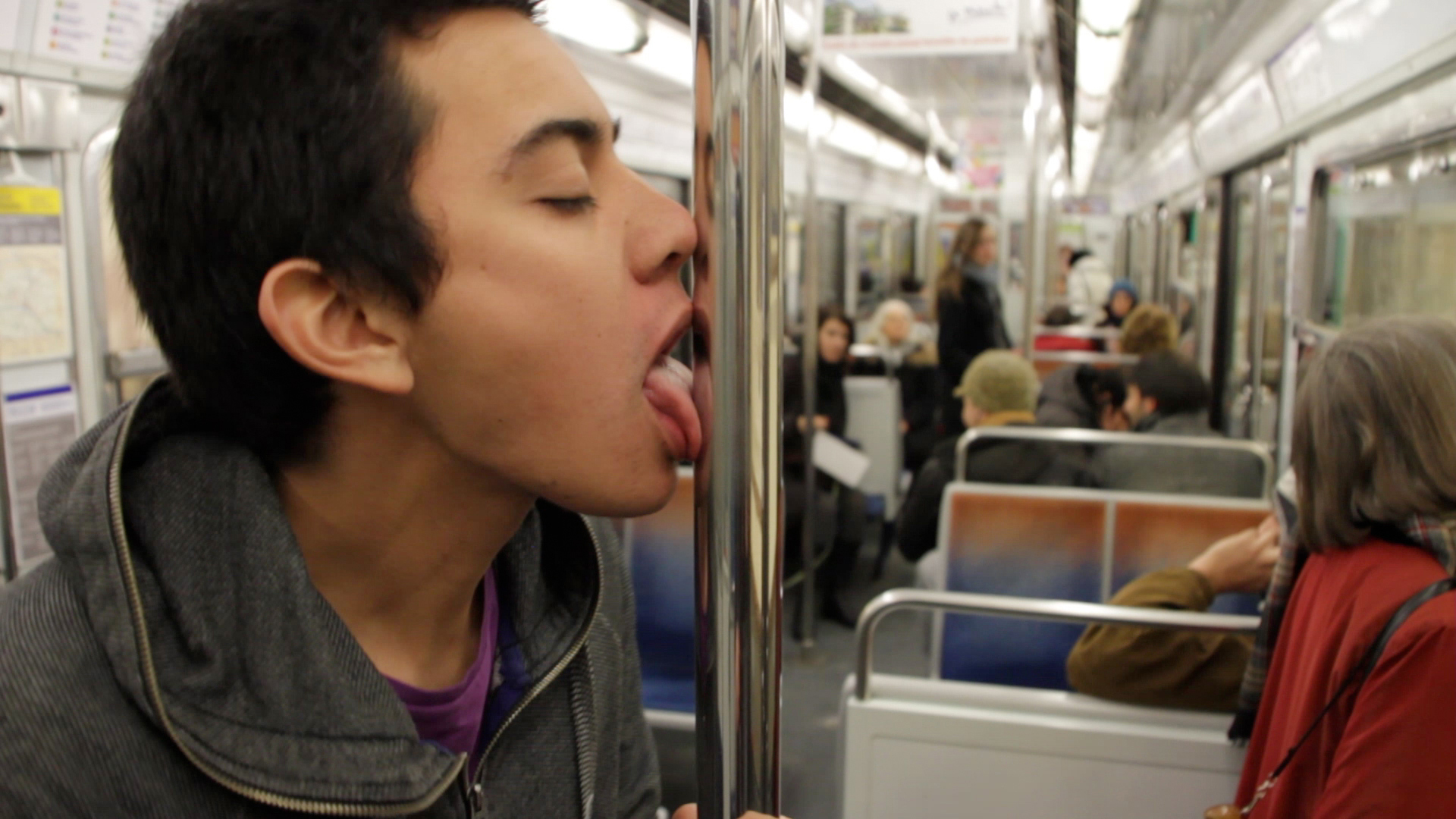 B&R: In the first of your texts you mentioned three anecdotes:
B&R: In the first of your texts you mentioned three anecdotes:
After World War II, an industrialist decided to turn the machinery used for melting bombs into equipment for the production of hair dryers for beauty salons. Sophisticated war technologies were thus transformed into devices for perfecting the “body”, as a socially and culturally determined concept. In the same years, issues of gender and sexual identity began to be politically discussed: sexual identification started to no longer be addressed as something natural, but rather as something that could be built artificially – and was, consequently, marketable.
(Dopo la seconda guerra mondiale, un industriale decise di convertire i macchinari fino a quel momento utilizzati per la fusione delle bombe in apparati per la produzione di caschi asciugacapelli per i saloni di bellezza. Le sofisticate tecnologie della guerra si trasformarono così in dispositivi per il perfezionamento del “corpo” come concetto socialmente e culturalmente determinato. Nello stesso momento storico l’arena politica iniziava a parlare di genere, di un’identità sessuale non più naturale, ma piuttosto artificialmente costruibile – e, di conseguenza, mercificabile.)
In 1971, a group of lesbian activists, armed with salami, stormed Professor Jérôme Lejeune’s anti-abortion conference. This marked the birth of so-called “Commando Saucisson” (Salami Commando), a movement that the Front Homosexuel d’Action Révolutionnaire would later merge with. Within this protest, salami was used as a parody of the traditional instruments of politics: police batons and the patriarchal phallus.
(Nel 1971 un gruppo di lesbiche armate di salami attaccarono il Professor Jérôme Lejeune mentre teneva una conferenza contro l’aborto. L’evento segnò la nascita del “Commando Saucisson” (commando salame), attorno al quale si sarebbe riunito poco più tardi il Front Homosexuel d’Action Révolutionnaire. Nella protesta, i salami diventavano una parodia degli strumenti tradizionali della politica: i manganelli della polizia e i falli del patriarcato.)
A few years ago, an artist manufactured “Asstral Traveler,” a butt plug in coprolite, a fossilized dinosaur guano from 140 million years ago. The use of this device, designed for producing pleasure through anal stimulation, allows the opening of a time warp. The anus becomes a post-identity organ, not only transcending distinctions between sexual identities, but also between human and inhuman, organic and inorganic, present and future.
(Qualche anno fa, un artista ha prodotto “Asstral Traveler”, un butt plug in coprolite: guano fossilizzato di dinosauro risalente a 140 milioni di anni fa. L’uso di questo oggetto, una tecnologia pensata per la produzione di piacere tramite la stimolazione anale, consente l’aperturadi un varco spazio-temporale. L’ano che ospita il plug diventa un organo post-identitario, trascendendo non solo la distinzione tra identità sessuali, ma anche la divisione tra umano e non umano, organico e inorganico, presente e futuro.)
They are minor narratives that tell of how everything around us can be reconsidered as equipment, weapon in the service of new mythologies. How and why did you choose them?
CV&C: We chose the three anecdotes because they seemed like emblematic moments to bring to light, transversal stories belonging to very different eras (the end of
the 1940s, the years just after 1968, and the contemporary era), which could establish dialogues with the works on view. The first anecdote tells the story of the war industry’s conversion into production structures for the construction, management and control of desire, a process that happened on a global scale and still has an impact on us today. The second is complementary to the first and focuses on feminist strategies of political emancipation through the appropriation and re-connotation of symbolic objects: in this case the sausage, used literally as a weapon against the patriarchy. The last example opens up a perspective that crosses and goes beyond the first two, using a technology for anal pleasure devised ad hoc as an unprecedented machine for the programmatic production of new emancipating mythologies. These narratives have acted like compasses for the selection of the works during our curatorial research, allowing us to avoid imposing a single all encompassing concept on the project, as often happens in thematic group shows. Likewise, we hope that these anecdotes will function as narrative anchors in the exhibition itinerary, accessible and historically situated, to orient the paths of visitors through the works on view.
Abbiamo scelto questi tre aneddoti perché ci sembravano dei momenti emblematici da portare alla luce, storie trasversali e appartenenti a epoche molto diverse (il secondo dopoguerra, gli anni immediatamente successivi al Sessantotto e la contemporaneità) che potessero articolare dei dialoghi con le opere in mostra. Il primo esempio parla della riconversione dell’industria della guerra in strutture produttive adibite alla costruzione, gestione e controllo del desiderio, processo avvenuto a livello globale e di cui sentiamo le conseguenze ancora oggi. Il secondo, ad esso complementare, si focalizza sulle strategie femministe di emancipazione politica attraverso l’appropriazione e riconnotazione di oggetti simbolici: in questo caso il salame, utilizzato (letteralmente!) come arma contro il patriarcato. L’ultimo esempio apre a una prospettiva che attraversa e supera le prime due, identificando in una tecnologia per il piacere anale congegnata ad hoc un macchinario inedito per la produzione programmatica di nuove mitologie emancipatorie. Queste narrazioni hanno funzionato come delle bussole per la selezione dei lavori durante la nostra ricerca curatoriale, permettendoci di evitare di imporre al progetto un unico concetto onnicomprensivo, come spesso invece accade nelle mostre collettive tematiche. Speriamo, allo stesso modo, che nel percorso di mostra fungano da áncore narrative, accessibili e storicamente situate, per orientare il percorso dei visitatori tra le opere esposte.
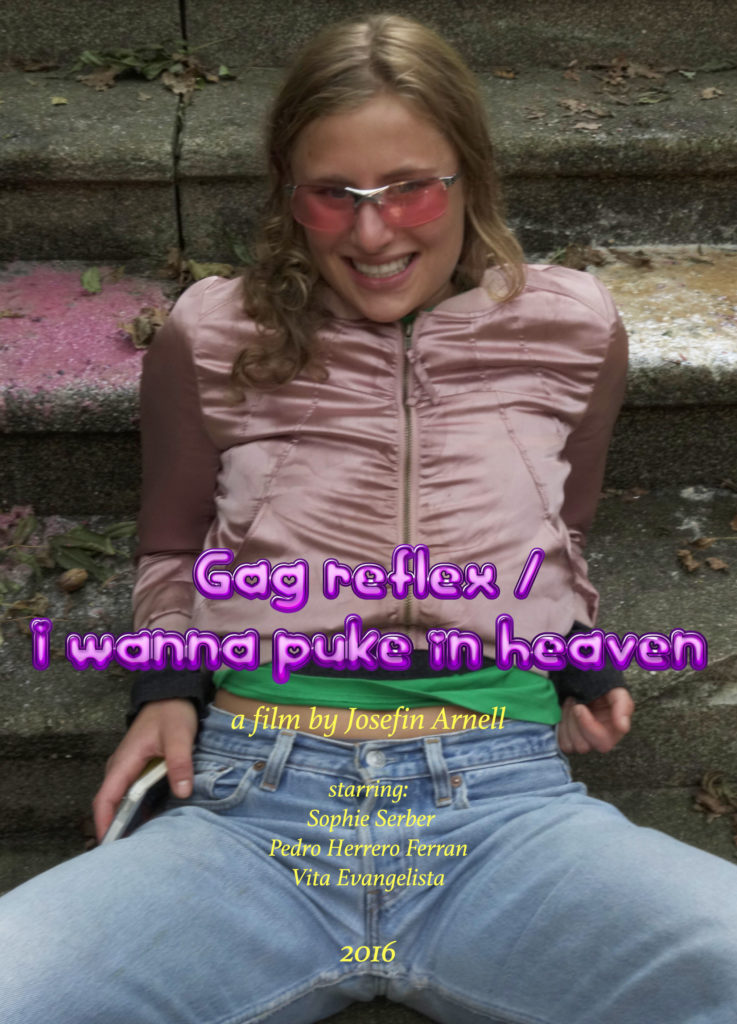 B&R: The theme of desire evokes a vast number of critical and theoretical works in Western post-structuralist, feminist and post-humanist thinking. In this context, your choice to name the exhibition after Luciana Parisi’s essay seems to mark a strong stance. How does the exhibition relate to the homonymous text?
B&R: The theme of desire evokes a vast number of critical and theoretical works in Western post-structuralist, feminist and post-humanist thinking. In this context, your choice to name the exhibition after Luciana Parisi’s essay seems to mark a strong stance. How does the exhibition relate to the homonymous text?
CV&C: ‘Abstract Sex’ brings together the legacy of these philosophical traditions, that have led to the awareness of the fact that concepts of gender, desire and sexuality are determinate socio-political constructs. Specifically, the proposal of Luciana Parisi is to “abstract,” through a trans-feminist reading, those categories from the cultural and biological preconceptions we have about them – hence the title of her text. Her thesis interests us because it interprets sex as an exchange of information that happens on multiple levels between bacteria, plants, animals, human beings, machines and technologies. Her hypothesis is that new policies of desire can emerge from the comparative study of the bio-physical, bio-political and bio-digital level of bodies. The title of the exhibition urges visitors to use an equally versatile approach in their experience of the works on view, in which the microscopic politics of biotechnologies meets the macro-politics of the socio-cultural and economic system in which we live.
‘Abstract Sex’ raccoglie l’eredità di queste tradizioni filosofiche, le quali hanno portato alla consapevolezza che i concetti di genere, desiderio e sessualità sono delle costruzioni sociali e politiche determinate. Nello specifico, la proposta di Luciana Parisi è quella di “astrarre”, attraverso una lettura transfemminista, tali categorie dai preconcetti culturali e biologici che abbiamo su di esse – e da qui il titolo del suo testo. La sua tesi ci interessa perché legge il sesso come uno scambio di informazioni che avviene a più livelli tra batteri, vegetali, animali, umani, macchinari e tecnologie. L’autrice ipotizza quindi l’emersione di nuove politiche del desiderio, attraverso uno studio comparato a livello bio-fisico, bio-politico e bio-digitale dei corpi. Il titolo della mostra invita i visitatori a utilizzare un approccio altrettanto trasversale nella fruizione delle opere esposte, in cui le politiche microscopiche delle biotecnologie incontrano le macro-politiche del sistema socio-culturale ed economico in cui viviamo.
B&R: ‘Abstract Sex’ suggests unexpected alliances between bodies, objects, machinery and concepts to disarm the traditional representations of desire. What strategies did you use to translate this imaginary into a visual level? How do the selected artworks move in this context? And how are they physically placed throughout the exhibition venue?
CV&C: The exhibition path establishes an ideal dialogue with the three narratives presented at the start of the text. A series of works relate to the anecdote regarding the transformation of machinery for the production of bombs, adapted for the making of hairdryer helmets: the gathering of bodies, objects, devices and voices that inhabit Jana’s rooms reveals the systems of power that exist behind the production and management of desire, identifying architecture, design and the products we consume on a micro and macroscopic level as biopolitical technologies for the production of gender and sexuality. A series of works in the show, on the other hand, enters a dialogue with the strategy of the Comman do Saucisson of re-connotation of instruments and objects in an emancipating way, touching for example on various forms of cross-dressing as a moment of production of multiple subjectivities that elude the dominant cultural categories. A thematic path that emerges repeatedly in the project is connected to the butt plug made of dinosaur excrement, which is also displayed in the exhibition. In these works, the focus shifts to the body as a porous enclosure for the encounter of different organisms and interests, imagining bodies as somatic and political machinery whose orifices can become channels for collective experience of new mythologies.
Il percorso di mostra dialoga idealmente con le tre narrazioni presentate all’inizio del testo. Una serie di lavori si lega fortemente all’aneddoto sulla trasformazione dei macchinari per la produzione delle bombe in caschi asciugacapelli: l’insieme di corpi, oggetti, dispositivi e voci che abita le prime stanze svela i sistemi di potere che sottostanno alla produzione e alla gestione del desiderio, individuando l’architettura, il design e i prodotti che consumiamo a livello micro e macroscopico, come tecnologie biopolitiche per la produzione di genere e sessualità. Altri dialogano invece con la strategia del Commando Saucisson, che riconnota strumenti e oggetti in senso emancipatorio, toccando ad esempio varie forme di travestitismo come momento di produzione di soggettività molteplici, che sfuggono le categorie culturali dominanti. Un percorso tematico che emerge a più riprese nel progetto si collega poi al plug anale in guano di dinosauro, a sua volta esposto in mostra. In questi lavori l’attenzione si sposta sul corpo come involucro poroso per l’incontro di organismi e interessi diversi, macchinario somatico e politico i cui orifizi possono diventare canali per la sperimentazione collettiva di nuove mitologie.
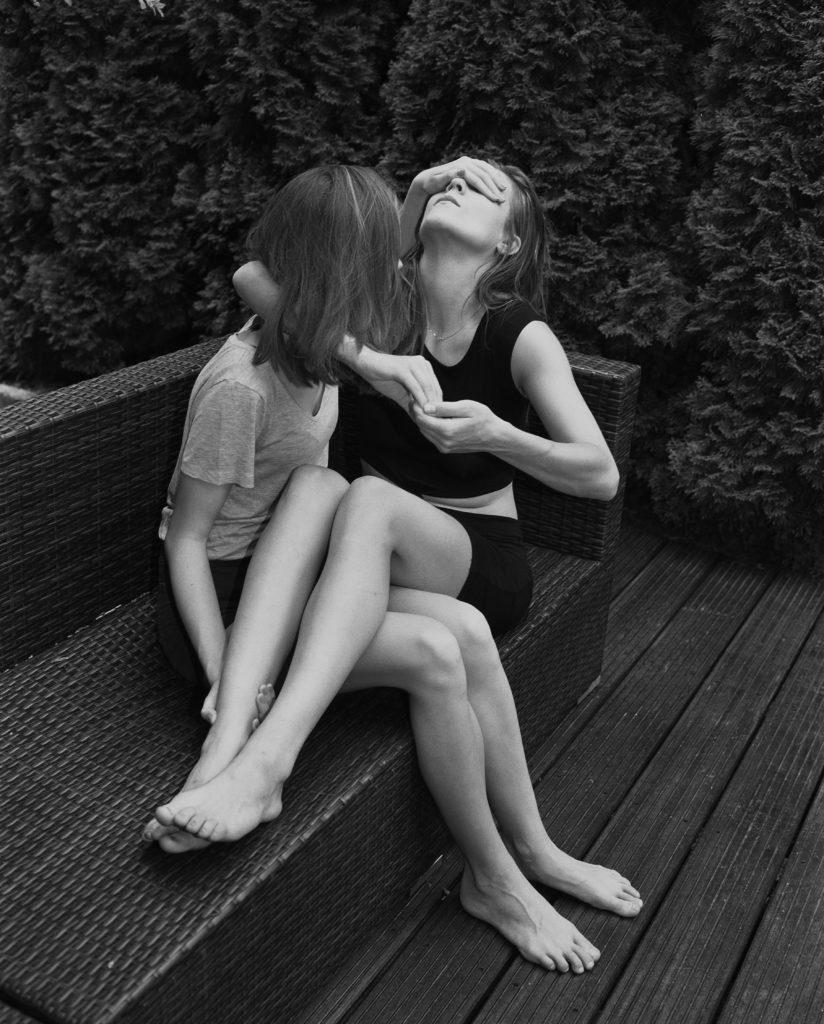 B&R: In our times, individuals are subject to identity issues and a sexual and biological sense of disorientation: the definition itself of “human being” is more and more
B&R: In our times, individuals are subject to identity issues and a sexual and biological sense of disorientation: the definition itself of “human being” is more and more
negotiable. ‘Abstract Sex’ suggests disidentification, post-pornography and hybridization as possible areas of autonomy generation. How is the concept of subjectivity addressed in the
exhibition? How do new boundaries and tools (biotechnology, hybridization, no/trans-gender, etc.) define the new horizons of meaning within which the subject takes shape?
CV&C: Biotechnologies have taught us that what we conventionally define as a “human being” actually describes an agglomerate of symbiotic organisms that interact with each other on an organic
and inorganic level, for which our body is simply a temporary platform. Philosophy has taught us that subjectivity, sexuality and desire are products culturally constructed by the political and economic interests that cross the historical period in which we live. In this context, instead of concentrating on the formulation of a specific subjectivity, we have decided first of all to take into consideration works that reason about the coexistence of a multiplicity of identities, different agencies and different relations. For example, in the work by Iván Argote this takes form in an ironic, literal way, in the interaction of the artist’s tongue with billions of microbes that settle every day on a pole in a public vehicle. Secondly, the concept and thus the practice of dis-identification takes form in various works, as an exercise diametrically opposed to the dominant identity politics. For example, in the work by Jacopo Miliani the desert is narrated as a symbolic place in which the sand can come together in constantly different combinations, without ever taking on a precise form. Beyond a situated physical context, it thus becomes an ideal horizon of reflection, in which the multiple and recombinatory action of the grains of sand takes on a choreographic and at the same time political value.
Le biotecnologie ci hanno insegnato che ciò che convenzionalmente definiamo “essere umano” descrive in realtà un agglomerato di organismi simbiotici che agisce a livello organico e inorganico, di cui il nostro corpo è solo una piattaforma temporanea. La filosofia ci ha insegnato che la soggettività, la sessualità e il desiderio sono prodotti costruiti culturalmente dagli interessi politici ed economici che attraversano il periodo storico in cui viviamo. In questo contesto, invece di concentrarci sulla rivendicazione di una soggettività specifica,
abbiamo deciso prima di tutto di prendere in considerazione opere che ragionassero sulla coesistenza di una molteplicità di identità, agentività e relazioni diverse. Ad esempio, nel lavoro di Iván Argote questo prende forma in modo ironico e letterale nell’interazione della lingua dell’artista con i miliardi di microbi che si posizionano quotidianamente sul palo di un mezzo pubblico. In secondo luogo prende forma in diversi lavori il concetto, e quindi la pratica, della disidentificazione, come esercizio diametralmente oppostoalle politiche identitarie dominanti. Ad esempio, nel lavoro di Jacopo Miliani, il deserto viene narrato come un luogo simbolico in cui la sabbia può comporsi in combinazioni sempre diverse, senza mai prendere una forma precisa. Diventa così, oltre che un contesto fisico situato, un orizzonte ideale di riflessione, in cui l’azione molteplice e ricombinatoria dei granelli di sabbia assume un valore coreografico e allo stesso tempo politico.
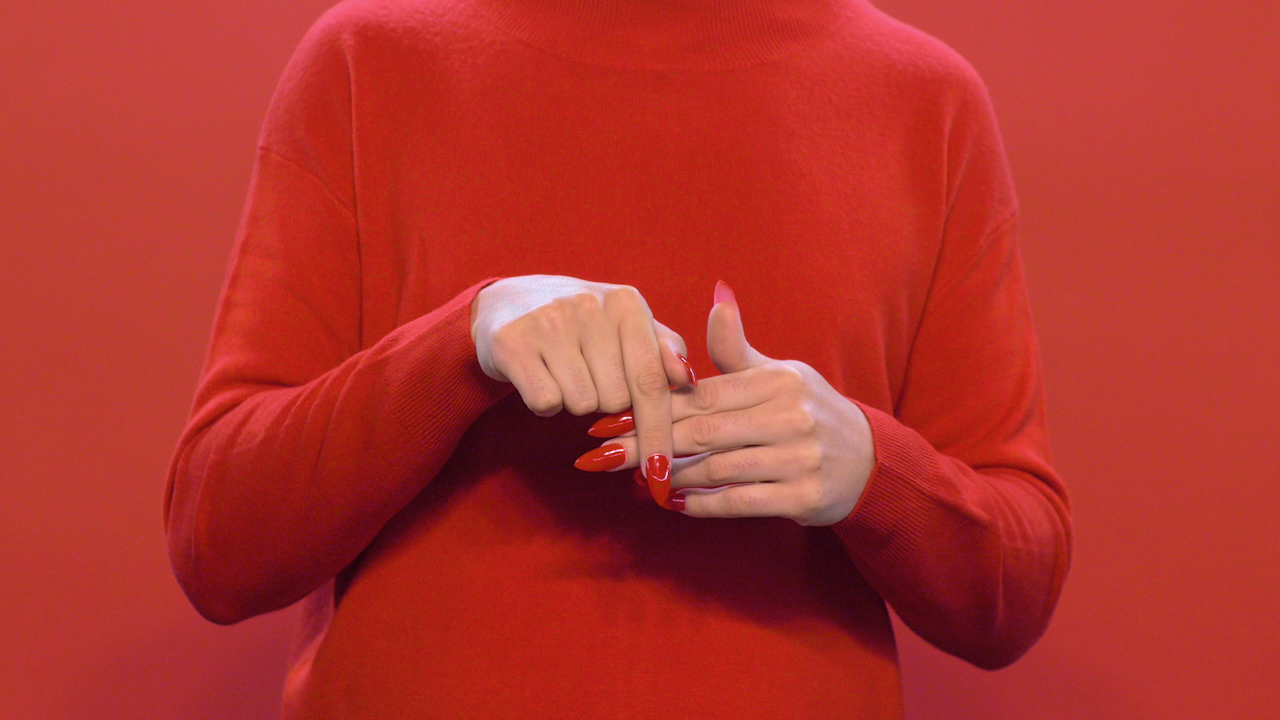
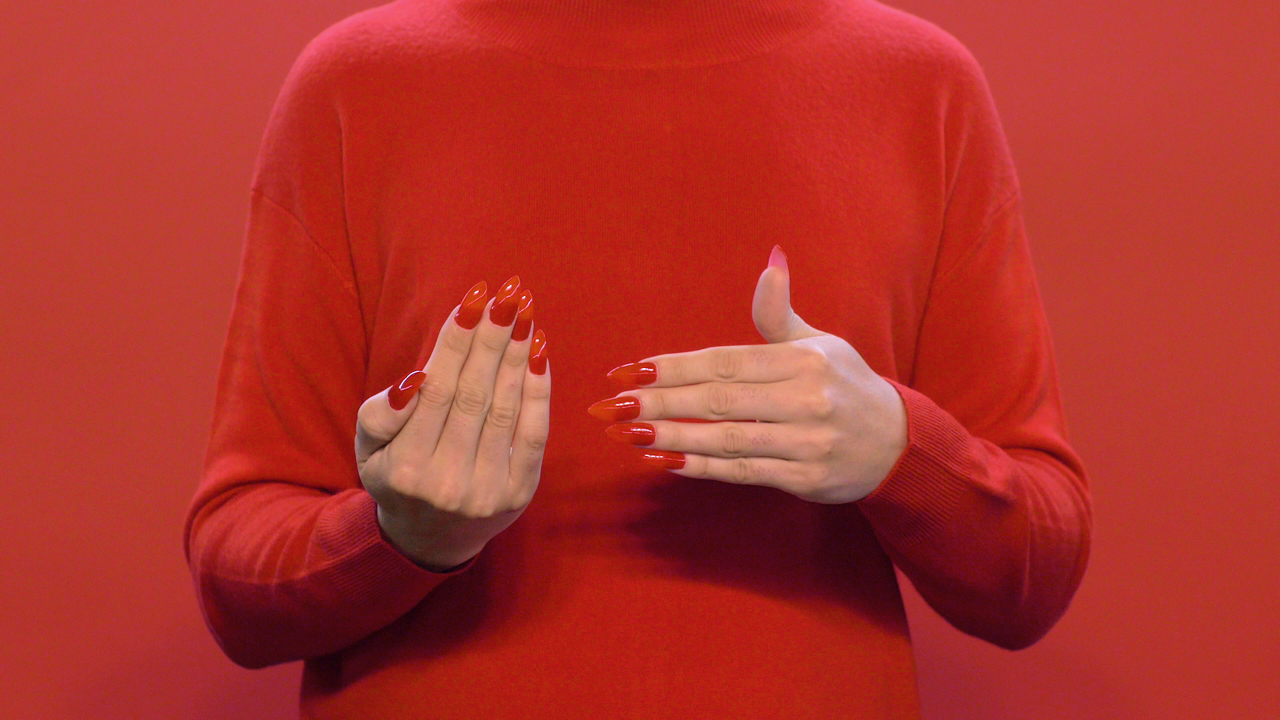 B&R: On one hand, the exhibition deals with the theme of censorship; however, entrance is forbidden to minors. This might seem like a contradiction. What does this choice mean in your critical and curatorial vision?
B&R: On one hand, the exhibition deals with the theme of censorship; however, entrance is forbidden to minors. This might seem like a contradiction. What does this choice mean in your critical and curatorial vision?
CV&C: Censorship, from the viewpoint of philosophy of law, has to do with a common sense of modesty, a fluid, ambiguous concept shaped by the history of ideas and customs. In the selection of the works for the exhibition, we have tried to get beyond these limits, acting in such a way that scandal can give way to thought. Censoring ideas is much harder than censoring
bodies, and we are more interested in investigating desire than displaying it. The ban on minors is a simple matter of caution, obligatory and necessary to defend oneself against certain hysterias of indiscriminate control.
La censura, dal punto di vista della filosofia del diritto, ha a che fare con il comune senso del pudore, un concetto fluido e ambiguo, condizionato dalla storia delle idee e del costume. Nella selezione delle opere in mostra abbiamo cercato di oltrepassare tali limiti, facendo in modo che allo scandalo si sostituisse la riflessione. Censurare le idee è molto più difficile che censurare i corpi, e a noi interessava di più interrogarci sul desiderio, piuttosto che mostrarlo. Il divieto ai minori è una semplice cautela, obbligatoria e necessaria nel difendersi da certe isterie di controllo indiscriminato.
